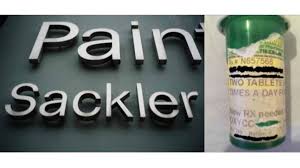Nan Goldin came up in the 1970s doing Heroin Chic photographs
before Calvin Klein branding created that term
in the 90s. She is most known for her gritty
New York apartment documentary color
photographs of sex, queers, whores,
drugs and their lives of that time.
its protagonists—including the
artist herself—are captured in intimate
moments of love and loss.
They experience ecstasy and pain
through sex and drug use; they revel at dance clubs and bond with
their children at home; and they suffer from domestic violence
and the ravages of AIDS. “The Ballad of Sexual Dependency is
the diary I let people read,” Goldin wrote.
The collection that evokes her main body of work known as “The Ballad of Sexual Dependency” has been included in every major art museum in the world from the Museum of Modern Art to the Guggenheim in the U.S, a household name for photographers, especially those artists who came up when AIDS was bringing every down to their knees. The Act Up Die In was coined at this time as direct action awareness to bring attention to this urgent issue. Goldin is bringing awareness through a Die In once again, to bring attention to America’s current opioid crisis. Goldin was addicted to heroin in the 70s and 80s and then almost 30 years later after she required prescription pain killers to relieve herself from the recovery of a pinched nerve surgery, she became addicted again. This time the drug was oxycotin. She believes one of the wealthiest art beneficiary families The Sacklers are to blame. The Sackler family made most of their wealth by drugs and have “given back” via art philanthropy which they are more well known for world wide than the creation of Valium in the 60s and Oxycotin in the 90s.
“She says that Arthur Sackler, who ran an advertising agency that successfully marketed the drug Valium in the ’60s, essentially created the model that was later used by his brothers, Raymond and Mortimer, founders of Purdue Pharma in 1991, to sell OxyContin for profit, ultimately at the expense of lives. As a result, she believes that all Sacklers have an obligation to help end the opioid crisis.” She wants art museums to stop taking donations from this family and she wants the Sackler foundation to create harm reduction projects and start to put money towards the current opioid crisis which she says, they helped to create. Nan Goldin found herself in the 3rd year of her addiction, eventually overdosing on Fentanyl which she thought was heroin because she had already two timed her prescription and ended up being cut off by her doctors, so she had to turn to the streets to get her fix. The result was almost deadly, but unlike some lives like Prince that Fentanyl has claimed Goldin survived to tell and shout and use her global art star leverage to demand that the very museums that indeed did and do support her career as an artist even if they were partially responsible for her addiction clean the blood off their hands and not continue to act like they are unaware of the crisis that is killing more people everyday than ever before. She wants the public to become aware to and the work that she is doing is unlike any activism that any other artist is doing to challenge philanthropy and the opioid crisis at the same time. Follow the money. Act Up.




No comments:
Post a Comment